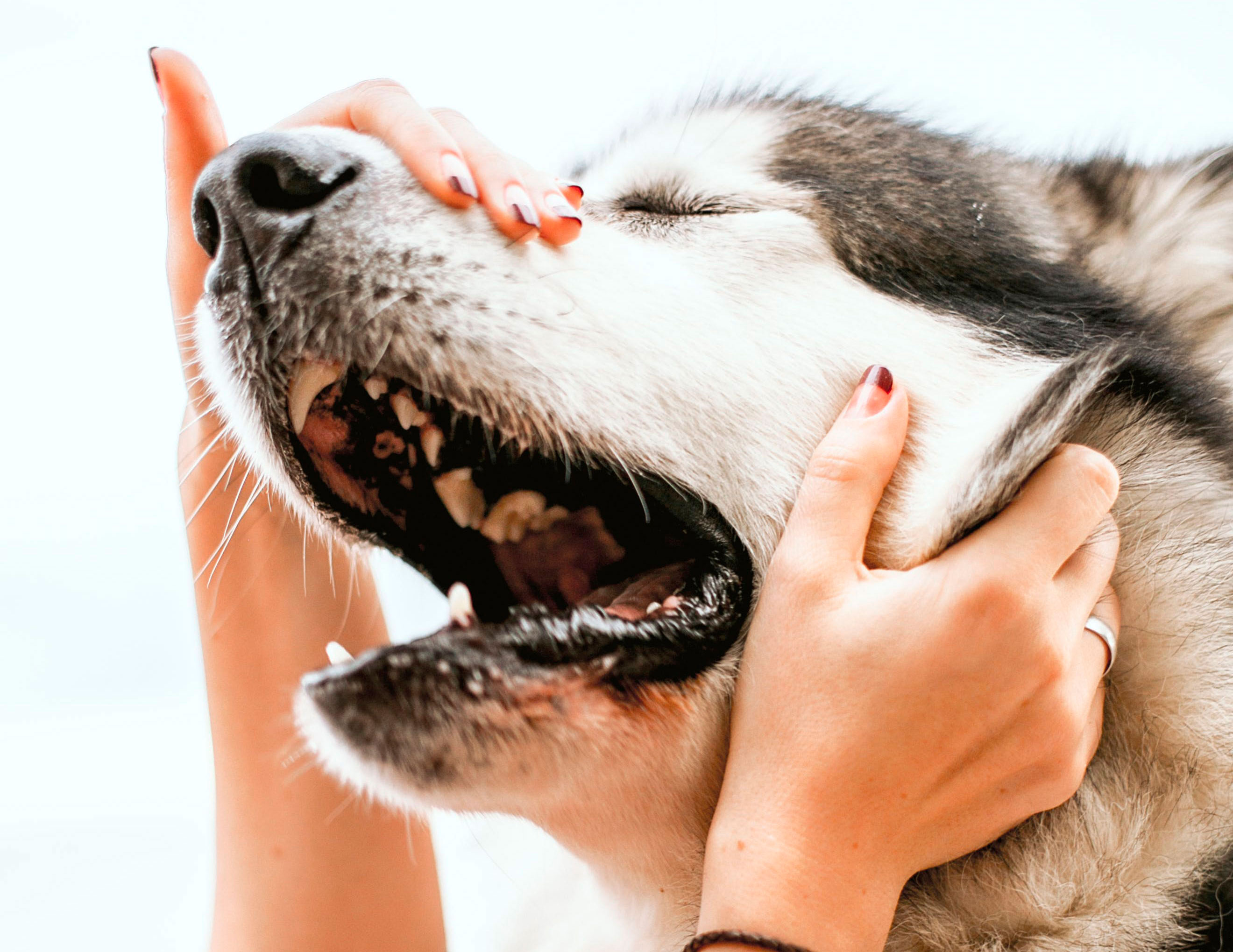
Understanding the Causes of Pale Gums in Dogs: A Veterinary Perspective
Your dog’s gum color can be an important sign of a serious underlying health problem. Normal gums should be a pink or salmon color. Pale pink or white gums can be a signal that your furry friend requires emergency veterinary attention. In this article, we will review some common causes of pale gums, how to look at your dog’s gums, and what to do if your dog’s gums appear pale.
- Pale gums in dogs can indicate a serious health problem.
- Anemia, heart disease, and shock can lead to pale gums.
- Dehydration and severe stress, pain, or anxiety may cause pale gums.
- Regularly assess your dog's gums; seek vet care if abnormal.
The information provided herein is for informational purposes only. Please refer to our disclaimer for more details..
Why Are My Dog’s Gums Pale?
If your dog’s gums are pale, it means there is insufficient oxygenated blood being delivered to his gums. Your dog’s gums may be pale due to dehydration, heart disease, shock, pain, or anxiety. Another extremely common category of causes of pale gums in dogs is anemia.
Anemia is characterized by decreased red blood cell count or low hemoglobin concentration. Hemoglobin is an iron-containing protein found in red blood cells that is responsible for oxygen delivery to tissues. Dogs become anemic due to loss, destruction, or a lack of production of red blood cells. Therefore, anemia can be due to several underlying causes.
1. Blood Loss Anemia
One reason your dog may have pale gums is anemia due to blood loss. Sudden and severe blood loss is serious because it can lead to shock and unfortunately, death. Slow, mild blood loss is also problematic and it will eventually result in an iron deficiency.
Dogs can lose blood due to traumatic external injuries. Less obvious causes of blood loss include stomach ulcers, bleeding tumors, blood clotting disorders, and parasites. For example, intestinal parasites like hookworms are common in puppies and can cause severe blood loss.
2. Destruction of Red Blood Cells
Pale gums can also result from hemolytic anemia, which occurs when red blood cells are destroyed inappropriately.
One type of hemolytic anemia is IMHA, which stands for immune-mediated hemolytic anemia. With IMHA, the immune system is affected causing a dog’s body to view his own red blood cells as a foreign threat. Dogs with IMHA develop antibodies to their red blood cells, resulting in their destruction.
Another cause of hemolytic anemia is metabolic disease that results in a phosphorus deficiency. For example, this occurs in dogs with diabetes and hepatic lipidosis (also known as fatty liver syndrome).
Toxins including drugs, plants, and chemicals can induce hemolytic anemia. Medications like aspirin and acetaminophen, plants like oak and red maple, and chemicals like heavy metals (e.g. copper, lead) can cause anemia.
Infections with pathogens such as bacteria or viruses can also lead to the destruction of red blood cells. An infection can also result in low red blood cell count if it impacts production in the bone marrow.
3. Lack of Production of Red Blood Cells
Certain types of underlying health conditions can affect the production of red blood cells, referred to as non-regenerative anemia.
For example, some nutritional deficiencies are linked to non-regenerative anemia. Nutrients like iron, copper, and vitamin B are necessary for the formation of red blood cells. Thus, insufficient levels of these nutrients can result in anemia and pale gums.
Chronic or long-term disease can also lead to non-regenerative anemia. In fact, chronic disease is the most common cause of anemia in dogs. Examples include long-standing inflammation, infection, liver disease, and endocrine disorders like hypothyroidism and Cushing’s disease. Chronic kidney disease is a common cause of non-regenerative anemia because these dogs produce less erythropoietin, a hormone necessary to stimulate red blood cell development.
Bone marrow diseases can result in non-regenerative anemia since red blood cells are produced in the bone marrow. For instance, certain drugs, toxins, and infections can cause aplastic anemia, which impairs the bone marrow’s ability to produce blood cells. Cancer affecting the bone marrow, such as primary leukemia, can also lead to reduced numbers of red blood cells.
4. Shock
Shock is a severe life-threatening syndrome where there is inadequate delivery of oxygen to the tissues. Because oxygen delivery cannot keep up with the demand, blood is redirected away from the peripheral tissues like the gums, and toward the vital organs.
Symptoms of shock include elevated breathing and heart rates, poor pulse quality, cold extremities, an altered mental state, and pale gums. Shock can be due to several types of underlying causes such as internal bleeding, bloat (aka gastric dilatation and volvulus), anaphylaxis (severe life-threatening allergic reaction), and sepsis (extreme response to infection) just to name a few.
5. Heart Disease
Heart disease, especially in advanced cases, can also cause pale or white gums in dogs. There are several types of heart disease that are classified by abnormalities in the structure, function, or electrical activity of the heart. Heart disease in dogs can be congenital (meaning present from birth), infectious, or degenerative.
Ultimately, heart disease negatively impacts the pump function of the heart, resulting in impaired blood circulation. Thus, dogs with severe heart disease such as congestive heart failure have decreased blood flow to the tissues, which can extend to the gums causing them to be pale.
6. Dehydration
Your dog may be dehydrated if he is experiencing vomiting, diarrhea, or decreased water intake. Dehydrated dogs can have pale gums because they have a decreased volume of blood. This results in poor blood circulation and thus, reduced blood flow to their gums.
These dogs will also have gums that are tacky or dry and thick, ropey saliva. If your dog is dehydrated, you may also notice that their skin is not as elastic. If dehydration is severe, your dog’s eyes may also appear slightly sunken.
7. Pain or Anxiety
Severe stress, pain, or anxiety can lead to pale gums. This is because acute stress can activate the sympathetic nervous system and trigger the “fight or flight” response. When this occurs, the adrenal glands release hormones including epinephrine (also known as adrenaline). This redirects blood flow throughout the body, which can cause pale gums.
How to Check Your Dog’s Gums
Many causes of pale gums are considered medical emergencies as they are potentially life-threatening. Therefore, as a pet owner, it is critical to regularly assess your dog’s gums. For example, a good habit is to check your dog’s gums every time you brush his teeth. It is especially important to check your dog’s gums if he is exhibiting additional symptoms such as lethargy or weakness.
How can you check the color of your dog’s gums?
- Ideally, you should have your dog in a seated position. Alternatively, if he is standing, make sure he is not pacing or trying to escape.
- Position your body and arms to support your dog and prevent him from squirming.
- Gently use your finger to lift the side of the upper lip to see your dog’s gums.
- Assess the color of your dog’s gums. Normal gums should be a light pink color.
- Note that some dogs, depending on their breed, have pigmented gums that are gray or black. When checking your dog’s gums, try to find a section that is not pigmented.
- Reward your pup with a treat or a toy afterward as positive reinforcement.
Please note that your dog’s gums can be other abnormal colors besides pale pink or white. If your dog has an underlying health issue, his gums could also be yellow, bright red, blue, or brown, all of which are considered abnormal. If your dog’s gums are any color other than pink, contact your veterinarian right away.
What to Do If Your Dog Has Pale Gums
Even though there are many potential reasons your dog’s gums could be pale, many of these underlying health issues are potentially life-threatening and require urgent veterinary care. Therefore, if you notice pale gums in your dog, contact your vet immediately so you can get your dog proper care. Early recognition can improve treatment success and may save your dog’s life.
129views
Share on Facebook
 Dark Mode
Dark Mode 

 No fees, cancel anytime
No fees, cancel anytime 






 Image credits:
Image credits:  Image credits:
Image credits: 










































0
0